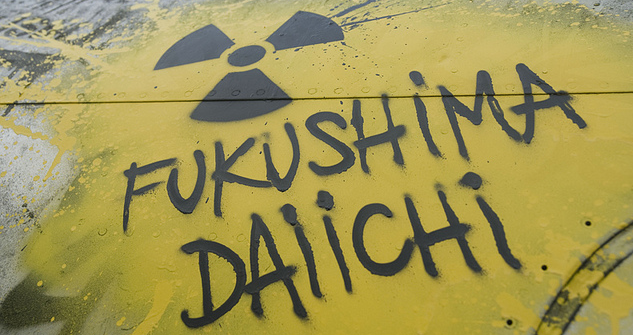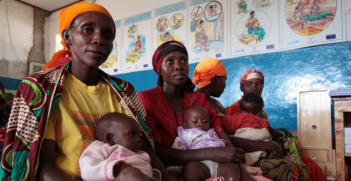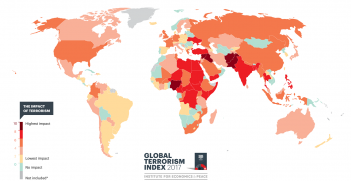The Ongoing Fallout from Japan’s Nuclear Meltdown

Four years after the earthquake and tsunami of 11 March 2011, Japan’s leaders and citizens still face many complex challenges. Among these, none is more complicated than the issue of nuclear power.
Concerns remain about the containment of radioactive waste and the progress of decommissioning the crippled Fukushima Daiichi Power Plant. Periodic media reports of radioactive water spilling into the Pacific Ocean have not inspired confidence. Instead, they directly undermine Prime Minister Shinzo Abe’s strong desire to restart Japan’s 54 nuclear reactors, which have been offline since the disaster.
There is still controversy about how to dispose of contaminated topsoil and other radioactive material scattered around Fukushima. Locals want their land decontaminated and habitable, and very few communities want a stockpile of radioactive waste in their backyard.
The level of uncertainty was patently obvious when the Science Council of Japan proposed that the radioactive waste material be stored at an above-ground facility for 50 years while officials and citizens devised a better option. But it has been difficult to find a locality willing to accept this material even in the short-term. Only in late February 2015 did Fukushima Governor Masao Uchibori finally agree to establish interim storage facilities in the towns of Futaba and Okuma. The radioactive waste is to be permanently disposed of ‘outside the prefecture’ in 30 years’ time.
The other side of the coin is that as long as the reactors lay idle, Japan must supplement its energy needs with imported alternatives — mostly fossil fuels such as LNG, oil and coal. This puts pressure on Japanese businesses and consumers who must bear higher electricity costs. Given the volatility of fossil fuel prices, greater dependency represents an imminent threat to Abenomics and its objectives of stimulating investment and consumption. And Japan is unlikely to make any progress on greenhouse gas emission reductions if it continues shifting to carbon-based fuels.
It is a very difficult dilemma indeed: the Japanese people are concerned about nuclear safety, yet they do not want to pay higher electricity prices, nor do they want to backtrack on the country’s global leadership in climate change initiatives. For political leaders whose decisions are governed by electoral cycles, bold long-term initiatives such as committing to renewables are risky — something former prime minister Naoto Kan and the Democratic Party of Japan learned the hard way.
Residents in regions most severely affected by the earthquake and tsunami also face ongoing challenges. Farmers whose lands were contaminated with radioactive fallout must make difficult decisions. Cleaning contaminated topsoil and foliage is an expensive undertaking and does not guarantee the elimination of radioactive hotspots. Some farmers are retooling and moving into other forms of agriculture (such as greenhouse production), but this can be costly and time-consuming and is not easy for elderly, established farmers. Younger farmers with families must also weigh up the health risks of taking their children back into areas deemed decontaminated.
But even if agricultural operations begin to revive, convincing consumers that Fukushima produce — rice, fruit, and seafood — is safe will not be easy. Advertising campaigns publicising the rigorous testing procedures for Fukushima produce run the risk of fuelling consumer concern rather than mitigating it.
Community rebuilding and restoration challenges also remain. In late 2014, around 90,000 people whose homes were destroyed in the disaster were living in temporary housing. A similar number were living in public and privately owned apartments financed by municipal governments, taking the total number of displaced persons to around 180,000.
The government’s specially created Reconstruction Agency is coordinating the construction of permanent public housing as well as providing support for some communities to relocate and rebuild on higher ground out of the way of future tsunamis. But as planning and cleaning up the debris continues to take time, much of this work only began in 2013. Many displaced persons may not be in permanent housing until 2016 at the earliest. And even with government support, many will simply not be financially able to rebuild.
There is also another troubling — if somewhat less pressing — issue lingering in the minds of some Japanese four years on. The damage in Tohoku was truly devastating for the victims. But from a national perspective, the region is relatively unpopulated and arguably less important in political and economic terms. But now scientists are predicting a similar calamity for the Tokyo region.
If such a disaster were to occur, the knock-on effects for the economy and society could be catastrophic. Tohoku certainly proved that even seismologists can miss the ‘big one’, but it’s the after effects that have demanded a serious rethinking of Tokyo’s disaster preparedness. Scientists are saying there is a 70 per cent chance that a magnitude 7.0 or higher quake will hit Tokyo by 2016 and a 98 per cent chance it will hit in the next 30 years.
Whether or not this eventuates, Tohoku and the disaster at Fukushima Daiichi should be a warning about the dangers of complacency.
Simon Avenell is Associate Professor in History and an Australian Research Council Fellow at The Australian National University. This article was originally published in The East Asia Forum on 7 March 2015. It is republished with permission.





